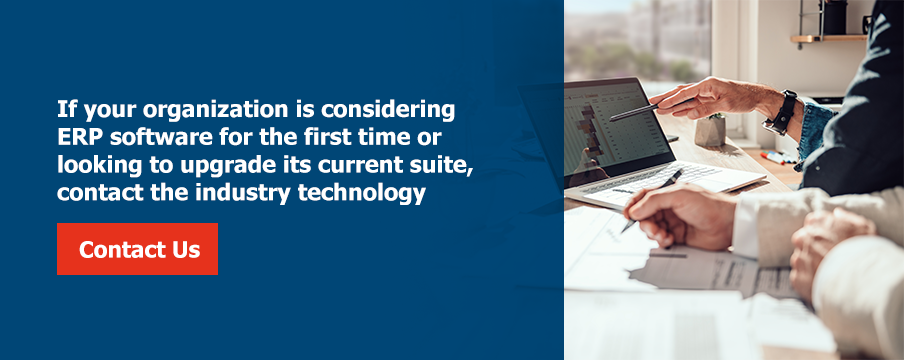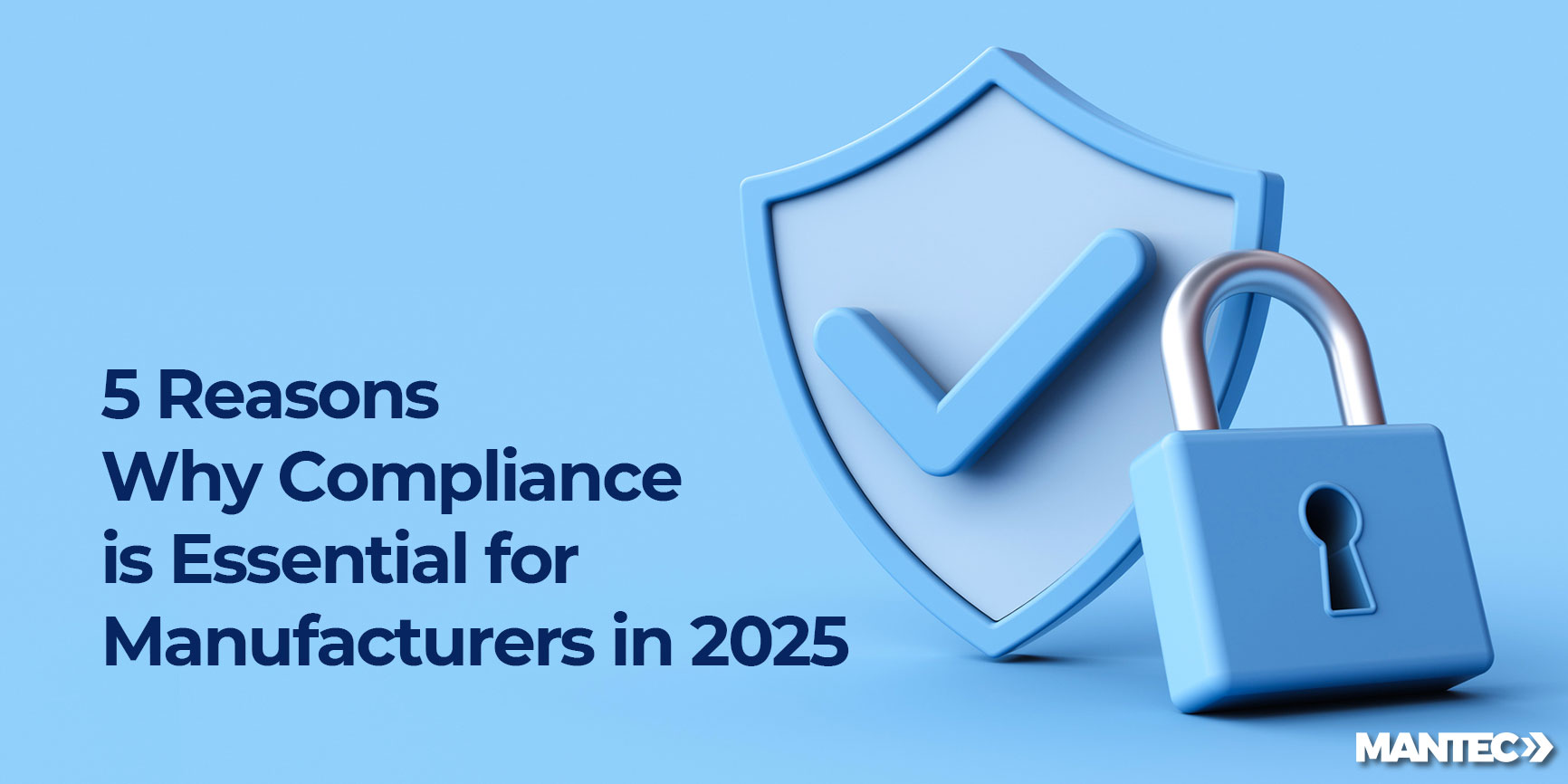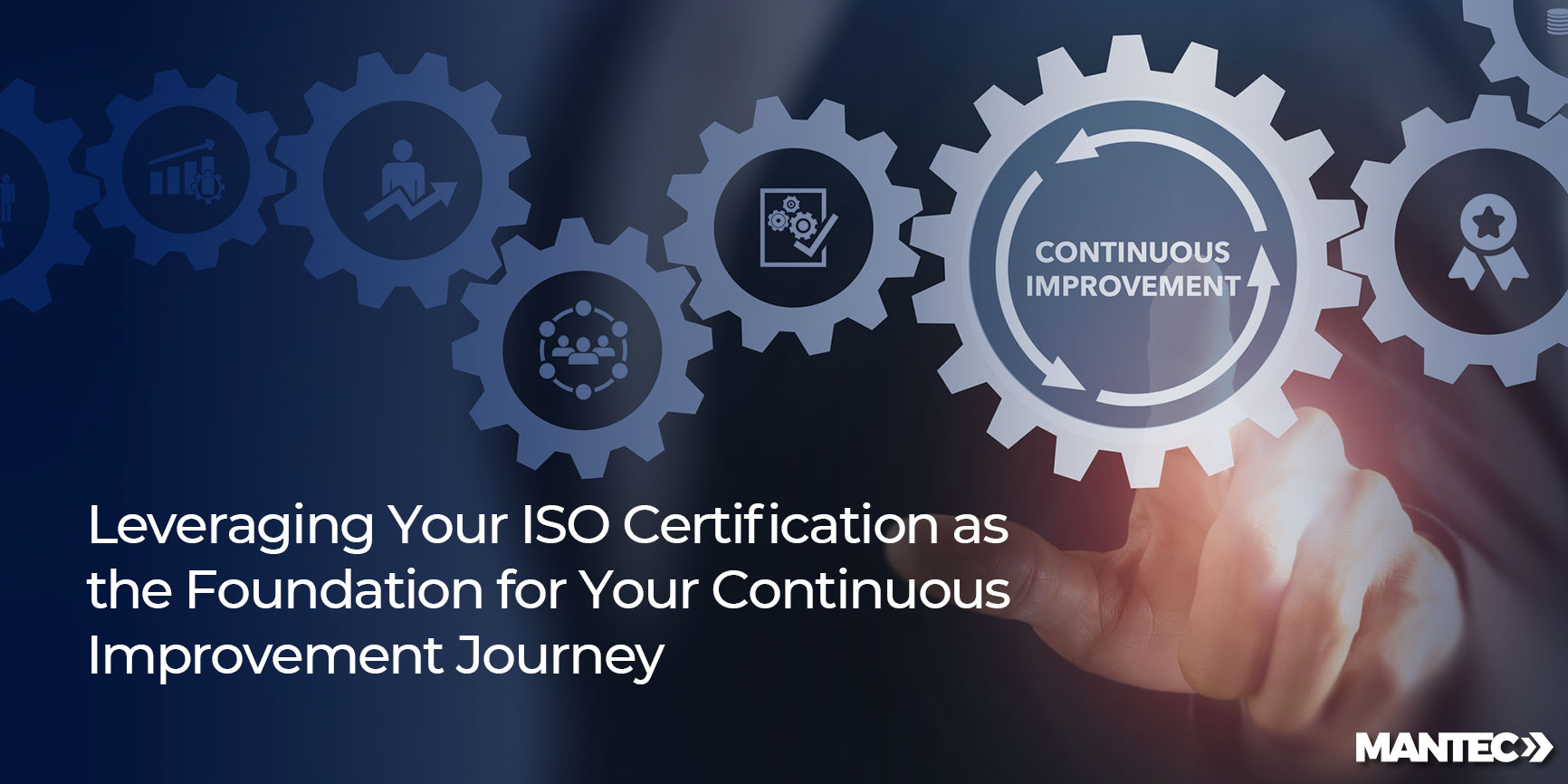In the fast-paced world of manufacturing, staying ahead often means embracing change. Soon, the only…

Enterprise resource planning (ERP) software for manufacturers is no longer optional — it’s business-critical, as vital in today’s fourth-wave revolution as robotics and AI applications.
Cut through the clutter and select an ERP manufacturing software solution best fit for your organization. Here’s how.
Quick Links
Benefits of ERP for Manufacturing
How to Choose ERP Software for Manufacturing
Is Your Manufacturing ERP Serving Your Business Needs?
Benefits of ERP for Manufacturing
ERP programs bring objective, measurable benefits for manufacturers today, including the following:
- Process visibility, integration: ERPs are your one-stop-shop for operational, front and back-office data. The synthesized platform means complete visibility over research and development, procurement, spec and UX design, production, sales, human resources, financial planning and analysis, transportation, delivery and more.
- Sharper automation: The automation ushered by ERP software frees employees from the menial. The platform executes repetitive administrative and documentation tasks using custom scripts you set, trimming manual input errors and further accelerating production workflows.
- Adaptive decision-making:Cross-function data at your fingertips means agile, informed decisions can be made quickly yet confidently. Use 360-degree automated reports to forecast market shifts, supply chain changes and consumer demand flux, preempting rather than responding to these inevitabilities.
- Improved change and risk management: With ERP software working as a central information and document repository, any allowed user can check data, review paperwork, analyze reports and tweak tasks instantly, reducing workflow choke points and department silos. This directly improves communication and transparency, even when key stakeholders depart from your organization. What’s more, the precision and lowered error rates are risk-management strategies imperative for product and service quality — as well as your reputation.
- Boosted customer loyalty and retention: Today’scustomers expect more amenities than ever. Mass product customization, one-day or overnight shipping, seamless return experiences and more press producers to make goods faster and better without sacrificing quality or raising prices. ERP software holds the power to forecast leaner production schedules, exert greater inventory visibility, inform delivery and distribution best-practices and more, allowing you to make good on customers’ needs.
- Increased profits: Whether trimming waste, shortening tasks or flat-out automating work, an ERP platform for manufacturing businesses directly saves time and money. It’s one of those rare technologies with the power to cut overhead and operational costs while simultaneously boosting sales — killing two proverbial expense birds with one stone.
How to Choose ERP Software for Manufacturing

There are dozens of ERP software choices for the manufacturing industry on today’s market. Many boast near-identical features and amenities while promising to solve your most severe operational pain points.
Select your organization’s best ERP solution with confidence, revitalizing core infrastructure and introducing a competitive boost with these steps.
1. Outline Problematic Business Processes
For example, is your R&D and design team frequently backlogged because they can’t order raw materials necessary for their roles? Do submitted material orders get stalled because purchasing personnel and finance personnel don’t maintain the same spreadsheets? And do those spreadsheets not input automatically into your accounting system, requiring continual manual and error-prone logging?
Your pain points will be unique and process-specific. The key is to spot redundancies and inefficiencies, as well as places in typical workflows where two or more people could be communicating more effectively.
2. Perform a Cost-Benefit Analysis
Cost-benefit analyses calculate the expense of maintaining operations as-is compared to the costs of new protocol. In other words, they show the cost of making a specific business process decision.
Your cost-benefit analyses should outline potential production and operational cost-savings accrued by switching to ERP software for manufacturers. It will become one of your most persuasive pieces when pitching an ERP solution to stakeholders, whether for the first time or to upgrade a legacy platform.
3. Appoint an ERP Task Force
Adopting a central task force creates cohesion and transparency across every stage of the ERP selection and integration timeline. In particular, these individuals personally interview and vet ERP software providers, as well as oversee the training sessions paramount to successful org integration.
An ERP task force can also be appointed to draft key performance measures to test the new platform, monitoring actual ROIs against those in the cost-benefit analysis.
4. Begin Vetting Software
The ERP program itself is a core piece of your company’s infrastructure. This asset has the potential to affect the way nearly every department conducts its work — plus how departments communicate those tasks with one another.
Assure a piece of software is primed for your organization if it:
- Integrates with your current software suite
- Alleviates specific process pain points, such as inventory control, supply chain management, order fulfillment, CRM, compliance, and business intelligence
- Is cloud-based, meaning it’s mobile and remotely accessible
5. Assess the Software Provider
Has an ERP provider worked with manufacturers in your industry? What about your size or operational scale? These are important questions to ask for two reasons. First, familiarity with your specific niche means an ERP suite far more suited to your exact business functions. Second, the provider will be able to offer more pertinent product support, offering subject matter expertise beyond baseline troubleshooting.
Additional services and amenities to look for in potential software vendors include:
- Product integration and implementation training
- Ongoing product support, available after the ERP is up and running
- Clear and transparent pricing structures and fees
- A direct contact for business needs
- Any other miscellaneous support fitting your operations
6. Consider Scalability
Growth is a continual business goal. Don’t assume that every piece of ERP software is designed to grow with you, though. In fact, expensive software developments, add-ons and upgrades are one of the easiest ways for a provider to incur additional revenue from clients, if they provide these services and features at all.
Have your task force consider only providers whose systems are demonstrably adaptive. That means products that are modular and can integrate with your other current applications, plus are cloud-hosted. ERP software unable to function with tomorrow’s fast-developing manufacturing advances — including blockchain, 3D printing, electronic data interchange, next-gen robotics and industrial augmented reality — will quickly run its course, landing you back at square one.
7. Try Before You Buy
Software demos or trial accounts are critical to ensure user-friendliness. It does no one any good to introduce an ERP platform with all the bells and whistles, but whose interface is impossible for anyone outside of IT to navigate.
With so many personnel in your organization reliant on the platform, select software that’s functionally designed, intuitive to use, clean and logical. Interfaces checking these boxes will directly improve employee adoption rates for these new pieces of technology, ushering quicker cost savings, performance metric boosts and — ultimately — your return on investment.
Is Your Manufacturing ERP Serving Your Business Needs?
If your organization is considering ERP software for the first time or looking to upgrade its current suite, contact the industry technology experts at MANTEC.
A premier nonprofit manufacturing consultancy group, we help clients integrate best-fit, manufacturing-centric tools suited for their operational goals. Call us for a technology consultation today.



